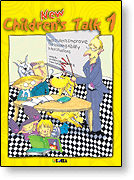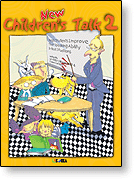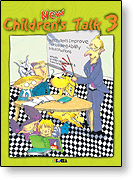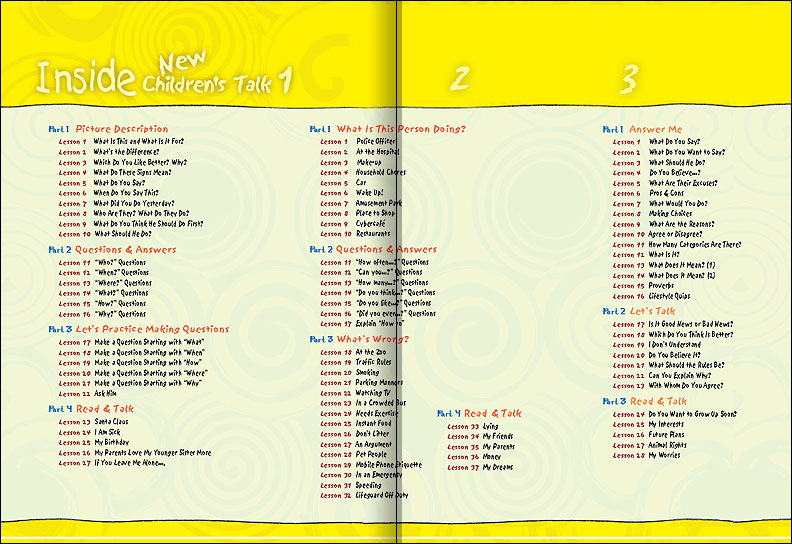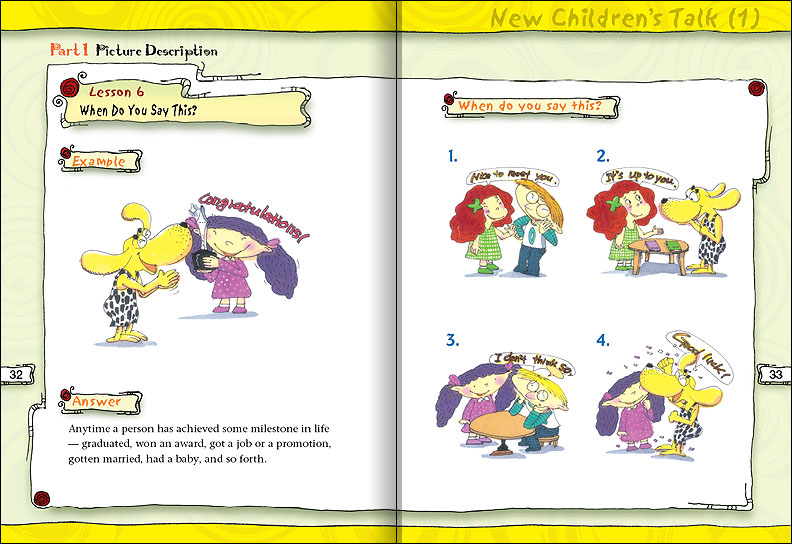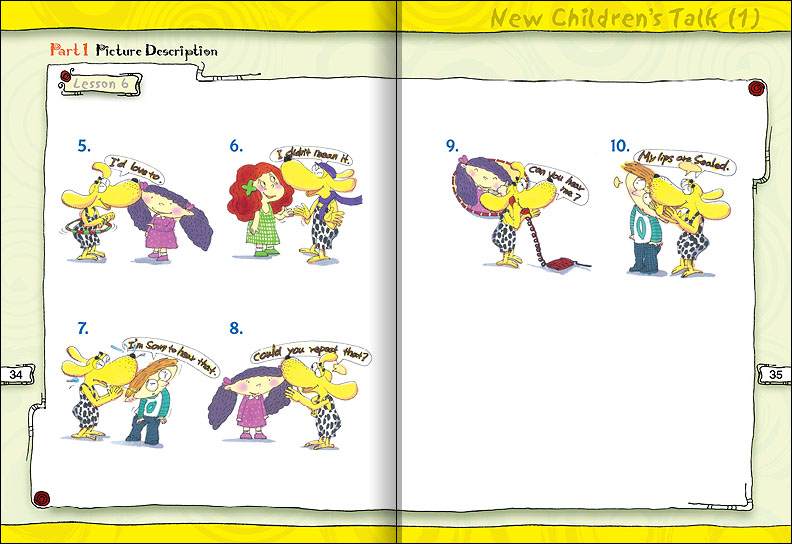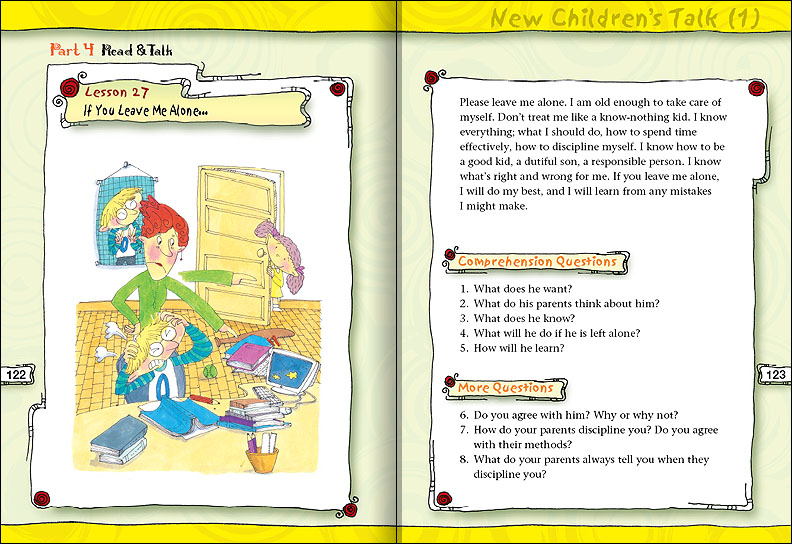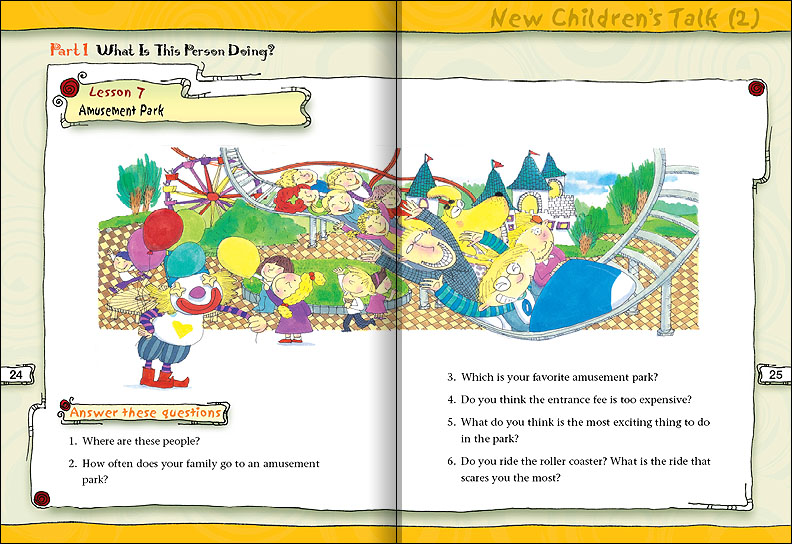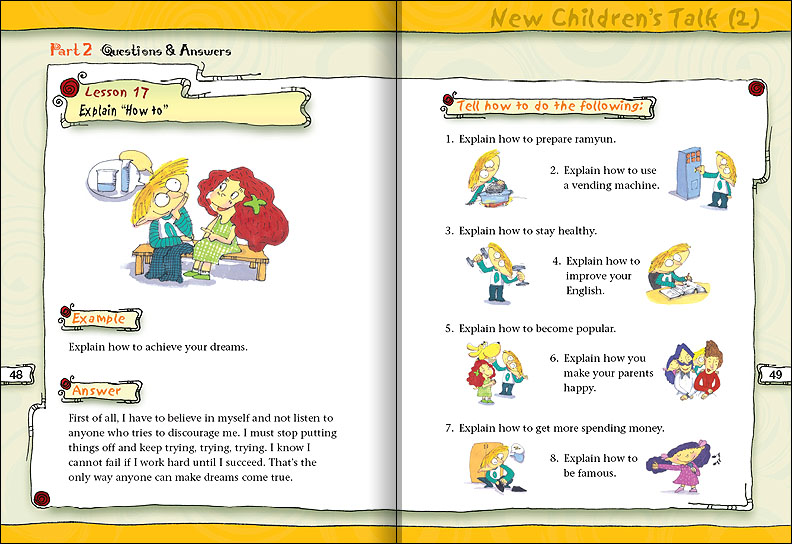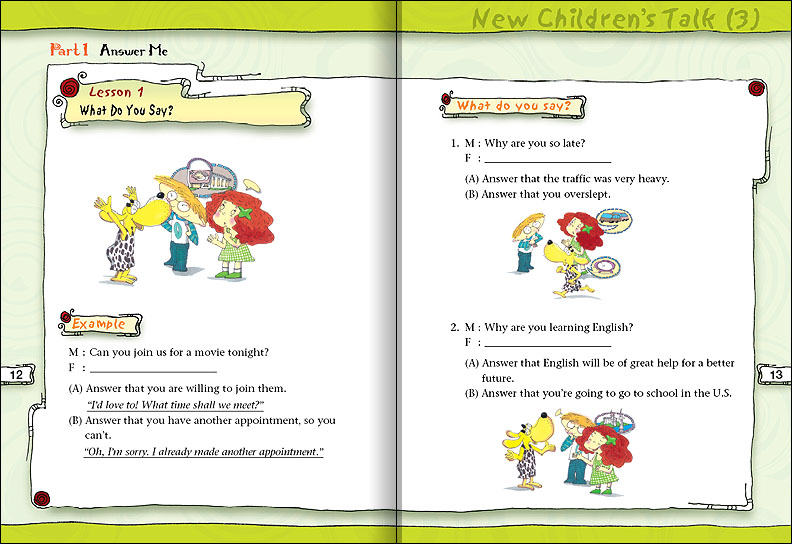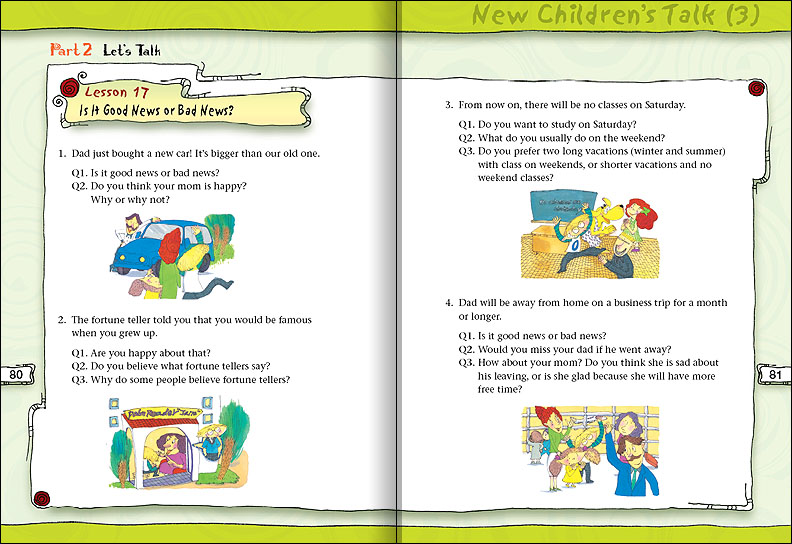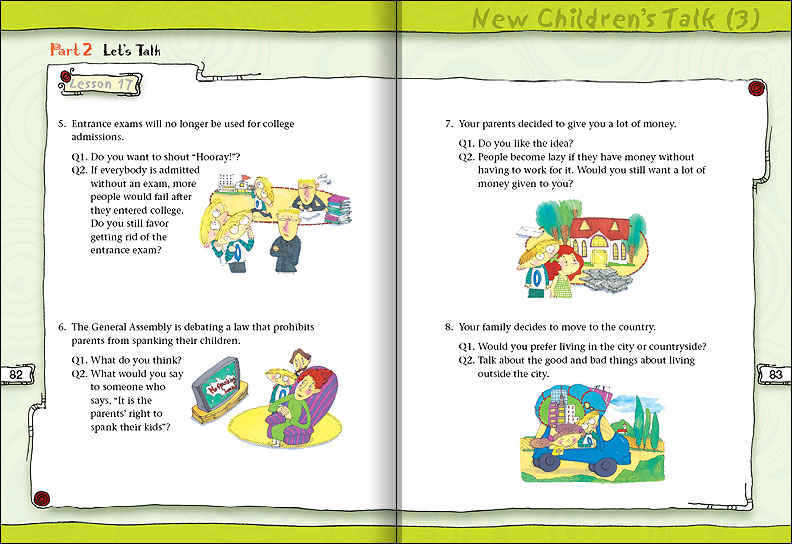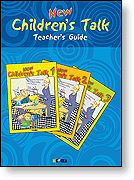 |
This series of three books is aimed at primary school students, including pre-school kids. Traditionally, beginning students practiced English patterns in a rote fashion in order to use those structures in certain situations. This series avoids such a rigid method and helps students create questions, answers, descriptions, and explanations on their own. Students learn a wide range of practical English functions, from creating wh-questions to describing what people are doing to agreeing and disagreeing. A teacher’s guide is available for this series. |
 |






